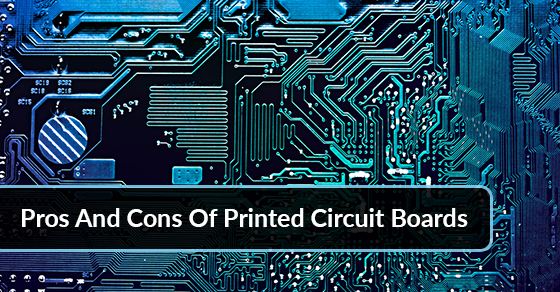Pros And Cons Of Printed Circuit Boards
A printed circuit board (PCB) is the base that supports and wires the surface-mounted and socketed components in a variety of electronics. In fact, most electronics use PCBs because of their many benefits. There are also some disadvantages to using a printed circuit board. If you’re unsure as to whether a PCB is right for your electronic product, let’s explore the pros and cons to help give you a better idea of what you need.
Pros of printed circuit boards
- Complex wiring isn’t an issue: The design of a PCB requires little to no complicated wiring on the surface of the board.Through automated production equipment, the surface of the board can be etched with the right electronic circuits.
- Better quality control: After you’ve designed and developed the board, testing is a breeze. You can perform quality control tests throughout the production cycle to ensure that your board is ready for use as soon as the manufacturing process is complete.
- Easy to maintain: PCBs require limited maintenance because their components are fixed in place. There are no loose parts or complex wiring (as mentioned above), so it’s easy to identify the different parts and maintain them.
- Small chance of short-circuiting: By relying on embedded copper tracks, PCBs are almost immune to short circuits. Moreover, issues with wrong wiring are also minimized, and broken circuits occur rarely. Plus, you’ll be performing quality control tests as you go, so if any issues do arise, you can stop them in their tracks.
Cons of printed circuit boards
- Single use boards: Printed circuit boards are designed with single use in mind. If you want to modify the board after it is printed, you won’t be able to and will need to create a new board from scratch. However, the low manufacturing cost may work in your favour if you need to create a new board to replace the one that needs modification.
- Etching isn’t an eco-friendly process: Etching uses chemicals that can produce a negative effect on the environment. Although the etching process is great for the board, it is not particularly good for the planet.
- Compatibility: When designing a PCB, you have to remember that they aren’t compatible with every electronic device. You’ll need to figure out what device you’re designing the board for before you start making it.
Printed circuit boards hold many advantages that oftentimes outweigh the disadvantages. For more information, please do not hesitate to contact us.
0 Comment

